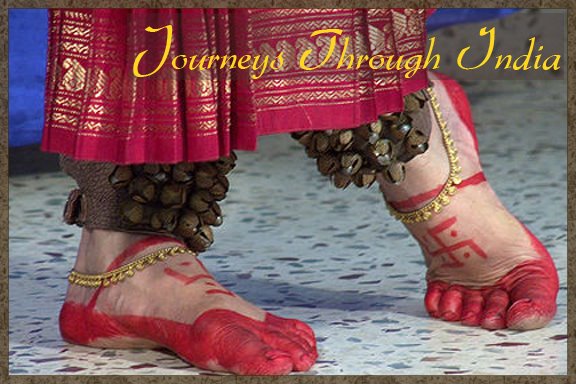Today we went on a bicycle rickshaw tour of the temples in Bodhgaya. We toured from 10:30 to 12:00 and still had not finished, but all the temples close at noon so people can eat lunch. However, we did get to see the Thai, Kanyo Tibetan, Daijoko (Japanese) Bhutanese, and Burmese temples plus a beautiful statue of the Buddha in an enclosed courtyard. Of all the temples, the Thai was my favorite, but this does not mean I did not enjoy visiting the others. I will not attempt many descriptions because “a picture is worth a thousand words” and I am going to post pictures as well. But I can say a little. What I noticed most in the thai temple were the colors: the deep blue background both contrasted and complimented the gold Buddha statue. I especially loved the crown the Buddha wore which directed the eye upwards towards heaven. Mom said that the Thai believe there is a direct link between God and every person, like a string coming out of the top of their head and that this style of crown embodies that. She also said that it is considered taboo to touch someone on the very top of their head, because this severs, however momentarily, that link to heaven.
The Japanese temple was notable for its simplicity. While every other temple had colorful paintings, or friezes in the case of the Bhutanese temple, on the walls and decorated pillars supporting the ceiling, the Japanese walls were plain white and the pillars were wood. But because of the plainness of the room, all of my attention was drawn irresistibly to the alter and the statue upon it.
I mentioned the Bhutanese friezes, but they deserve much more. They were exquisite, masterful pieces of art. As we left the temple, I found myself wondering what material had been used; the overall effect was similar to some of the carved walls on Hindu temples, but those are made of stone. The walls of this building could not have supported so much stonework. It did not look or feel like wood. My entirely uninformed guess is that it is made out of plaster, but I would love to see the entire process; the molding, the mounting, the colorful, delicate painting. Everywhere I looked around me, there were moments from the Buddha’s life captured on the walls, and before me was yet another beautiful statue of the Buddha.
We watched a movie about the Partition of Pakistan called (remarkably) “Partition”. It was very depressing. (If you have any intention of seeing it, do not read this next part. I always give away the endings to movies.) The movie centers on a Muslim girl who gets separated from her family during Partition but is repeatedly protected by a Sikh man named Gyan. They eventually get married but then news comes that her family, who she had believed dead, had actually made it to Pakistan. Leaving her husband and son behind, she journeys to Pakistan only to be imprisoned by her brothers who will not let her return to her Sikh husband because of their hatred of the religion of the people who killed their father. Her husband converts to Islam so he can enter Pakistan and rescue her. The climax is at a train station. The girl escapes with the help of her mother, but her brother follows her. Her husband manages to save her but in the process gets pushed in front of a moving train. The movie shows both the hatred and horror of Partition, but also the ability of people to overcome this hatred through basic human compassion. I think I should be a movie critic, or possibly the person who writes the descriptions on the back covers of movies and books. It would be an excellent excuse to watch movies and read books.
We went to dinner at a so-called up-scale restaurant, but neither Mom nor I liked the food very much. I guess we should stick to the budget places in the future; they seem just as good.

Blog Archive
- 05/10 - 05/17 (1)
- 05/03 - 05/10 (2)
- 04/26 - 05/03 (14)
- 04/19 - 04/26 (3)
- 04/12 - 04/19 (6)
- 04/05 - 04/12 (7)
- 03/29 - 04/05 (9)
- 03/22 - 03/29 (4)
- 03/15 - 03/22 (6)
- 03/08 - 03/15 (2)
- 03/01 - 03/08 (1)
- 02/22 - 03/01 (4)
- 02/15 - 02/22 (27)
- 02/08 - 02/15 (11)
- 02/01 - 02/08 (3)
- 01/25 - 02/01 (1)
- 01/18 - 01/25 (26)
- 01/11 - 01/18 (2)
- 01/04 - 01/11 (21)
- 12/28 - 01/04 (16)
- 09/21 - 09/28 (1)
- 09/14 - 09/21 (1)

No comments:
Post a Comment